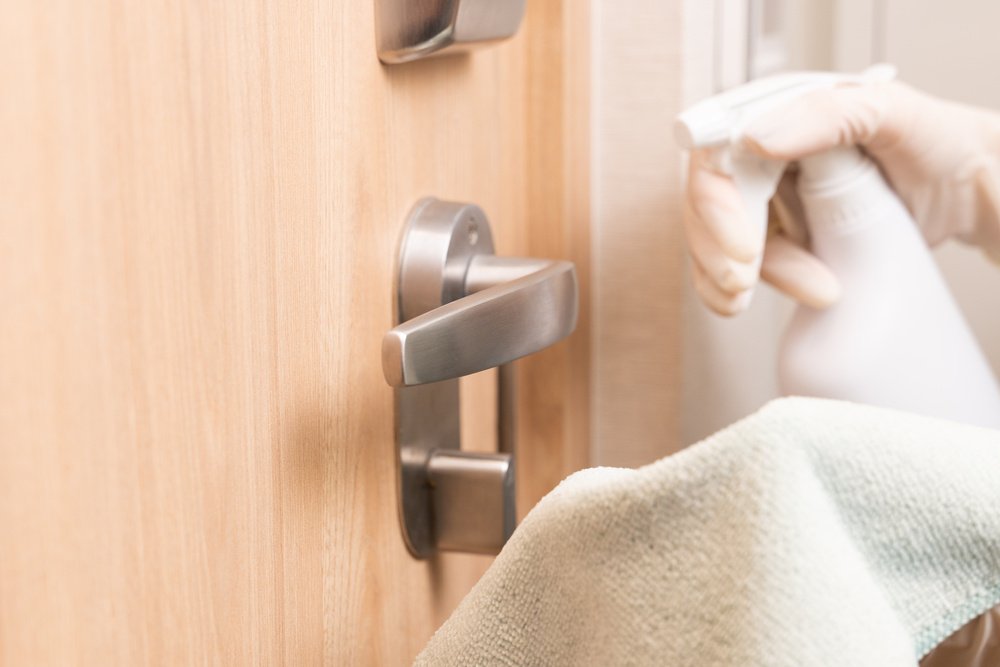Here at All Pro Cleaning Systems, we have spent a lot of years cleaning distribution facilities, medical buildings, office complexes, private clubs, and more. We have even worked with property management companies on complete facility cleaning and maintenance. One thing we have learned over the years is that high-touch surfaces need to be a priority for cleaning crews.
High-touch surfaces are so named because they are touched frequently. Among them are door handles, countertop surfaces, office equipment, and office chairs. They are harbingers for germs, pathogens, and general dirt simply because they are touched so frequently by so many people.
It goes without saying that cleaning high-touch surfaces is imperative to stop the spread of germs. Such surfaces should be more than just clean to the naked eye. They should also be sanitized and, in some settings, disinfected too.
Here are the best practices for cleaning high-touch surfaces in commercial settings:
1. Assess and Identify
It is important to take the time to assess and identify all the high-touch surfaces in a given space. Door handles are obvious. The same goes for office equipment. But look beyond the obvious to identify things that might otherwise slip your attention. Consider light fixtures, elevator buttons, handrails, and so on.
An honest assessment of a space identifies all high-touch surfaces regardless of how convenient or inconvenient cleaning them might be. It acknowledges that no high-touch surface should be ignored.
2. Choose Appropriate Cleaning Products
The very nature of high-touch surfaces makes them prone to germs and pathogens. Therefore, choosing appropriate cleaning products is a must. We recommend EPA-approved products known to be effective disinfectants.
Along with choosing the right cleaning products is paying attention to manufacturer instructions. Labels explain how to correctly use the solutions. They also provide warnings about mixing their solutions with other products. Cleaning crews should always follow these instructions to the letter.
3. Establish a Cleaning Schedule
The idea behind routinely cleaning high-touch surfaces is to reduce the risks associated with spreading germs. Effectiveness relies heavily on frequency. Therefore, it is a good idea to establish a cleaning schedule for high-touch surfaces.
A general rule in the professional cleaning industry is to address high-touch services a minimum of twice daily. Some surfaces – particularly those in restrooms – need more attention. Cleanings should be scheduled based on usage.
Keeping high-touch surfaces as clean as possible also dictates a daily deep cleaning. Where janitorial or cleaning crews might simply wipe down high-touch surfaces two or three times during the workday, those same surfaces could be deep cleaned overnight.
4. Utilize Proper Cleaning Techniques
A cleaning solution is only as effective as the techniques cleaners apply to their work. As such, it is critically important to apply the proper techniques. For example, pre-cleaning I touch services prior to disinfection is generally recommended. Other techniques include:
- Allowing appropriate contact time for disinfectants.
- Using disposable towels or multiple cloths to avoid cross contamination.
- Starting with the cleanest surfaces and moving toward the dirtiest.
- Cleaning from the top down.
It might be necessary for cleaning crews to make use of personal protective equipment (PPE) when cleaning high-touch surfaces. At the very least, rubber gloves are a good idea.
All these best practices should be supported with proper documentation. Cleaning crews should maintain accurate records of cleaning schedules and productivity. Supervisors and employers should keep records relating to procedures, policies, and standards.
High-touch surfaces are susceptible to germs and pathogens. But addressing them with appropriate cleaning solutions, techniques, and scheduling keeps them as clean as possible while also preventing the spread of germs.



